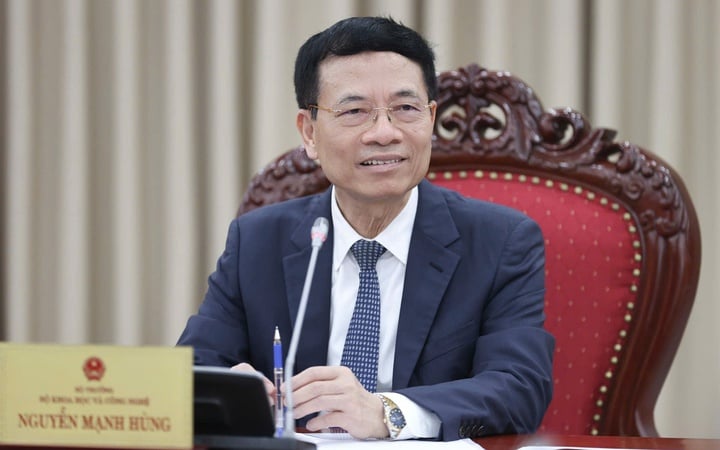
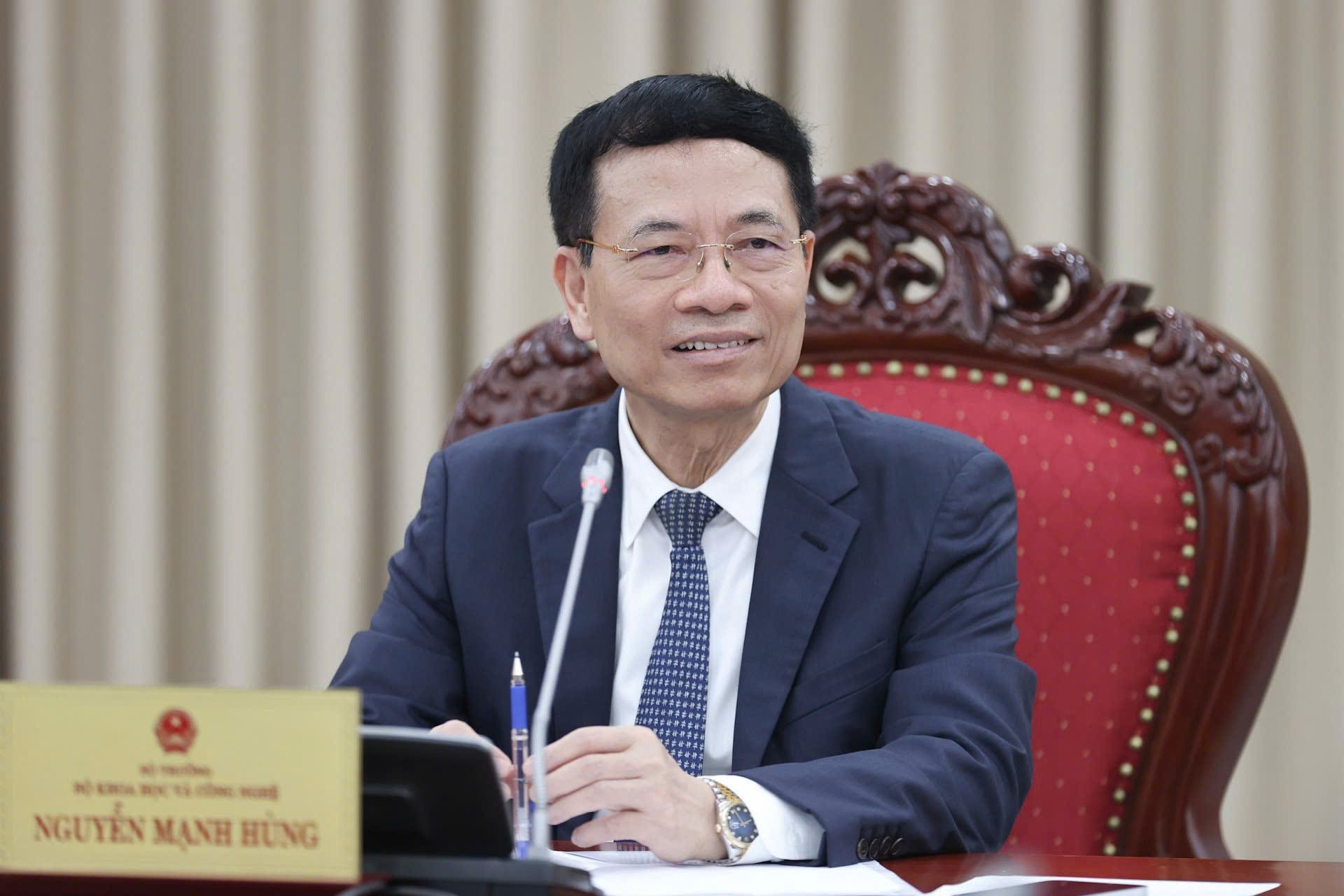
Minister Nguyen Manh Hung spoke at the working session on April 22.
Science and technology (S&T) include science (S&T) and technology (CN). Science is to obtain knowledge from Heaven, to find what is already available in Heaven, not to create. Technology is to create tools based on knowledge from Heaven, to create by humans, not what is already available in Heaven. So, science and technology are different, requiring different approaches and ways of doing things. Science is to find what is already available in Heaven and Earth, the secrets of Heaven and Earth. Technology is to create new things that do not exist in Heaven and Earth. Therefore, technological development is the space of humans, the creativity here is limitless.
About the world context. Science and technology are developing faster than ever. Many technologies are breakthroughs, changing the game, destroying old systems and thinking, changing the way of development and competition. Technology competition has become the main competitive front, which will change the global order. Not being self-reliant means being dependent and gaining very little profit. Fundamental competition still has to return to basic research, but for developing countries, a suitable roadmap is needed.
Only when science and technology flourishes can the nation prosper .
Only when science and technology are strong can a nation be strong. Science and technology is not for the sake of science and technology but for the prosperity of the nation and its contribution to humanity. A nation that wants to become a powerful nation must be a science and technology powerhouse. A nation that wants to become a developed nation must be a nation with developed science and technology.
Vietnam's modernization must be based on the modernization of science and technology as a foundation. High-quality development must be based on science and technology. Double-digit development must be based on science and technology. Therefore, science and technology are the foundation of the nation.
The path of developing Vietnam's science and technology: 1- Science and technology is aimed at socio-economic development, solving major national problems; 2- Comprehensive industrialization to create land for science and technology/innovation; 3- Innovation for all people to develop science and technology; 4- Science and technology focuses on mastering strategic industries, industries that Vietnam has great demand for but is dependent on; 5- Linking science and technology with industry, with industrial innovation, supporting the development of production capacity; 6- Talent is the core; 7- Innovating the science and technology management system.
The S&T institution must be continuously reformed to stimulate the proactiveness, positivity and creativity of scientists and engineers, aiming at mastering technology, self-reliance and self-reliance in S&T. Restructuring the S&T system, restructuring the spending structures, improving the innovation capacity of subjects and individuals in S&T activities. Eliminating barriers to thinking and mechanisms for S&T. Giving more autonomy to organizations and individuals doing S&T research. Building institutions to become competitive advantages in S&T. Allocating enough national resources so that S&T truly becomes a driving force for development (3% of the state budget for S&T/Innovation). The decisive role of the market in allocating resources for S&T, while taking advantage of the role of the state to stimulate and stimulate positivity in the stages of research, production and training. The revised Law on S&T must reflect these orientations.
Science and technology aim at the ultimate result of improving national competitiveness, increasing labor productivity, contributing to economic growth, improving people's quality of life, and improving national governance capacity.
Science and technology aim to solve the country's major problems: double-digit growth, streamlining the apparatus, high-quality growth, solving environmental pollution, strengthening the potential to protect the country, becoming a developed country with high income by 2045...
Science and technology promote innovation and put it in the context of digital transformation
Persist in the path of innovation. Consider innovation and industrialization as the greatest characteristic of science and technology development in this period. Innovation and industrialization are easier than science and technology, but they are decisive in the development of Vietnam. Innovation and industrialization are also intermediate steps to master technology. Persist in the path of self-reliance and self-reliance in science and technology to take the initiative. The Law on Science and Technology is amended to the Law on Science, Technology and Innovation, placing innovation on par with science and technology to emphasize the application aspect of science and technology. A science and technology powerhouse must pass through a powerhouse in innovation. Science and technology research organizations must be linked with innovation organizations. Science and technology is finding seeds, but planting in which land and taking care of them until harvest is the next stage of science and technology, which is innovation. If science and technology is broken and cannot be connected with innovation, it is a failure.
Science and technology aim to master Vietnam's strategic technologies. Towards self-reliance, autonomy and self-reliance in science and technology. Strategic technology must lead to strategic products and strategic industries. Because only when it becomes an industry will its impact on the economy be large enough. Therefore, science and technology must aim at strategic products and strategic industries. The way we master core technology is to go from mastering products, mastering product design, and integrating them into commercial products. This is the intermediate stage to mastering technology.
Science and technology contribute 1% to the country's GDP growth.
Shift from a research mindset to get results (with articles, reports) to research to change practice. Changing practice can be changing a perception, not necessarily applying technology. Science and technology tasks must be linked to the specific needs of the industry, locality, and business, have applicable outputs, and have receiving partners.
Science and technology do not only go from Heaven to Earth, but mainly from Earth to Heaven. Take reality as the land for developing science and technology, from the needs of reality, set out problems for science and technology.
Measure the final results of science and technology, measure the impact of science and technology on economic growth, on national competitiveness, on people's quality of life. If the output results can be measured, there is no need to worry about spending on contracts, no need to worry about increased input costs.
Balance natural science and social science. Social science contributes to the development of the country no less than natural science. Such as studies on national governance innovation in the context of industrialization and modernization, in a two-level model; studies on national development strategies based on culture; studies on innovation in the Party's leadership methods in the new era; studies on effective implementation of Party resolutions; studies on attracting talents, creating talents to participate in the management and development of the country...
Every dollar the state spends on science and technology must attract 3-4 research dollars from businesses. 70-80% of the science and technology research budget is to fund R&D activities of businesses, unlike before, when there was almost no funding for businesses. Funding for businesses is based on the co-funding formula: the state spends 25%, businesses spend 75%. For spending on institutes and universities, the state basically has to spend 100%.
Enterprises play a key role in technological innovation
Promote the role of large enterprises in research and development, especially in developing strategic technologies. The State encourages and supports small and medium enterprises in technological innovation. Support enterprises in leading or participating in important national science and technology projects. Lead enterprises to cooperate closely with institutes and universities, jointly solve science and technology problems in the industry, coordinate research, and create talents in the field of science and technology.
Basically transfer all basic research to universities. This is where the best and most abundant human resources are, namely professors, teachers, researchers, and students. The research and development force in universities is basically forever young.
Basic research also aims at application. Establish a mechanism to evaluate scientific tasks according to 3 groups: 1- Serving public policy. 2- Business application. 3- Improving basic knowledge. Each group has different criteria. The Department of Science must issue these evaluation criteria. Note that articles are necessary to confirm academic qualifications, but should not be the only criteria to evaluate scientific research, especially when the public budget needs to be directed towards solving national, industry and local problems, contributing to socio-economic development.
Restructure science and technology programs. Eliminate formalities, eliminate dispersion, focus on less but more. We are currently funding too much (over 40 programs) but the effectiveness is unclear. We must restructure to less than 10 programs. Stick to strategic technologies, key areas that Vietnam has demand and capacity for, to restructure. Funding is larger (not just a few billion VND, but also tens of billions, hundreds of billions and more). Manage outputs clearly, but audit inputs more lightly.
A scientist is not only someone who has an article, a scientific title, a degree or an award, but also someone who has a patent that is applied in practice to create high value for economic growth, or to improve basic knowledge. New knowledge and new solutions discovered (theories, models, algorithms, technologies, or policies) have practical impacts through the application of research results to products, technologies, policies or social solutions.
Researchers are covered by a cost contract, own the research results to commercialize, and benefit from the commercialization of research results. Scientists and technologists who commercialize research results will have their income exempted or reduced from personal income tax.
It is necessary to build a large-scale national program on upgrading technology for enterprises in each chain. Select 1% (10,000) of the most important enterprises in the chains (for example, textiles, agricultural processing, construction materials...) to upgrade technology.
Comprehensive digital transformation of science and technology activities and science and technology management. Building a digital platform to manage the entire life cycle of science and technology tasks. Research institutions must use this platform to manage research topics using the state budget.
On international cooperation
Science and technology are global and contemporary. Cooperate to develop national science and technology and contribute to world science and technology. Cooperation in science and technology is always mutually beneficial, based on the advantages of both parties to cooperate. Vietnamese science and technology participates in solving global problems, most of Vietnam's big problems are global problems, solving Vietnamese problems is solving global problems. Vietnam does not beg anymore, there must be something Vietnam brings out, something Vietnam brings back. Science and technology is a global network. The more networks, the more science and technology develops. Units in the bloc must build national and global science and technology networks.
Structure of science and technology/innovation/digital transformation expenditure from the state budget
The expenditure structure for the trio of Science and Technology/Innovation/Industry Transformation is equivalent.
The structure of science and technology expenditure according to 3 components: regular expenditure, development investment expenditure and task expenditure is: 10/20/70. Spend the majority of the money on science and technology tasks. Continuously invest annually, 5,000 billion VND each year, to develop facilities, especially key laboratories, to form science and technology infrastructure.
The structure of expenditure on scientific research and technological development tasks is: 15/85. 85% of scientific and technological expenditure is for technological development. Developing countries all prioritize technological development expenditure. Scientific research expenditure accounts for 15% but in absolute terms it is 4-5 times higher than in 2024.
Structure of science and technology task expenditure between institutes and enterprises: 20/80. Strongly shift technology development to enterprises.
To go a long way in science and technology, we need to have a long-term vision, look at the big picture, and plan globally, but focus on the core. The Department of Science and Technology must plan this vision, which can be a strategy, or best of all, a guideline to help the Ministry stay on track.
Minister of Science and Technology Nguyen Manh Hung
Source: https://mst.gov.vn/tu-luc-tu-cuong-ve-khoa-hoc-cong-nghe-khat-vong-hung-thinh-quoc-gia-197250428104719376.htm


![[Photo] General Secretary attends special art program "Spring of Unification"](https://vphoto.vietnam.vn/thumb/1200x675/vietnam/resource/IMAGE/2025/4/29/e90c8902ae5c4958b79e26b20700a980)
![[Photo] Nghe An: Bustling atmosphere celebrating the 50th anniversary of Southern Liberation and National Reunification Day](https://vphoto.vietnam.vn/thumb/1200x675/vietnam/resource/IMAGE/2025/4/29/64f2981da7bb4b0eb1940aa64034e6a7)
![[Photo] Ho Chi Minh City residents "stay up all night" waiting for the April 30th celebration](https://vphoto.vietnam.vn/thumb/1200x675/vietnam/resource/IMAGE/2025/4/30/560e44ae9dad47669cbc4415766deccf)
![[Photo] Ho Chi Minh City: People are willing to stay up all night to watch the parade](https://vphoto.vietnam.vn/thumb/1200x675/vietnam/resource/IMAGE/2025/4/29/cf71fdfd4d814022ac35377a7f34dfd1)
![[Photo] Hanoi is brightly decorated to celebrate the 50th anniversary of National Reunification Day](https://vphoto.vietnam.vn/thumb/1200x675/vietnam/resource/IMAGE/2025/4/29/ad75eff9e4e14ac2af4e6636843a6b53)
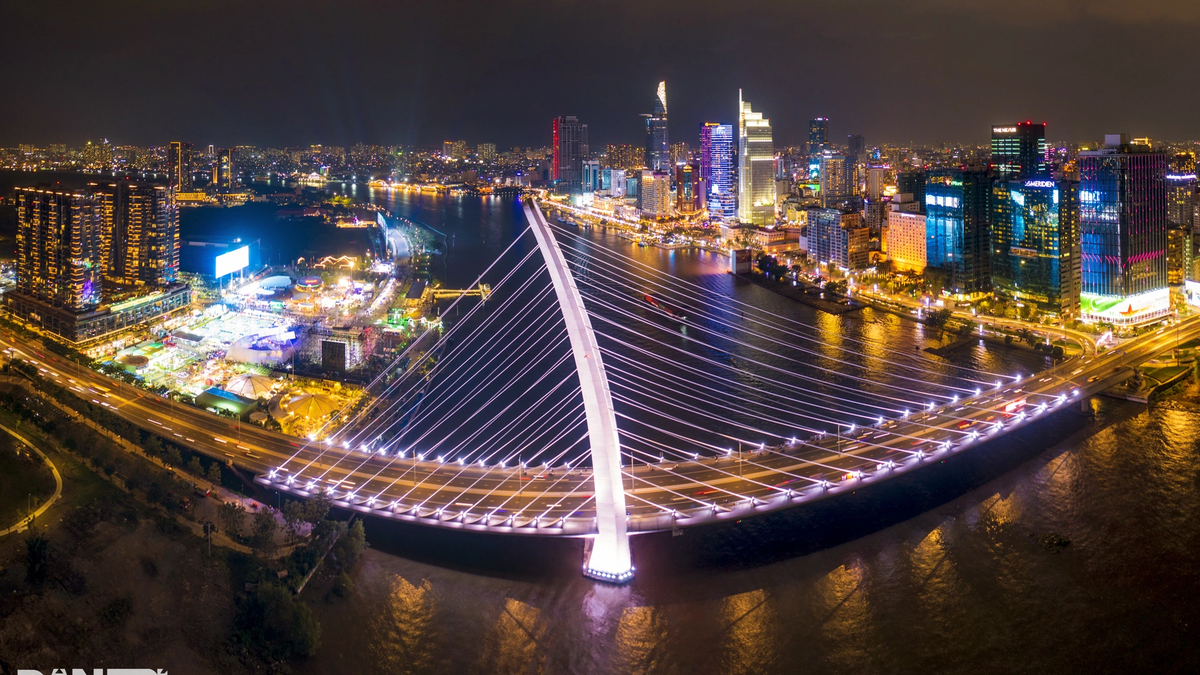











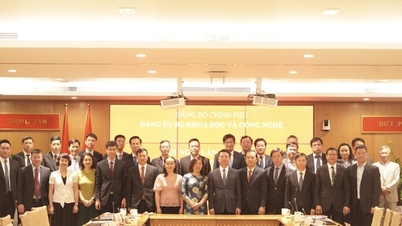




![[Photo] Prime Minister Pham Minh Chinh meets to prepare for negotiations with the United States](https://vphoto.vietnam.vn/thumb/1200x675/vietnam/resource/IMAGE/2025/4/29/76e3106b9a114f37a2905bc41df55f48)
![[Photo] People choose places to watch the parade from noon on April 29](https://vphoto.vietnam.vn/thumb/1200x675/vietnam/resource/IMAGE/2025/4/29/3f7525d7a7154d839ff9154db2ecbb1b)


































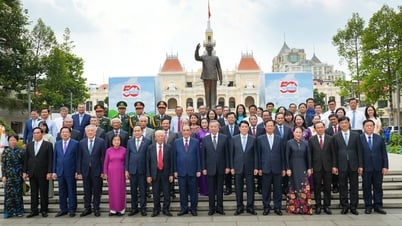


























Comment (0)